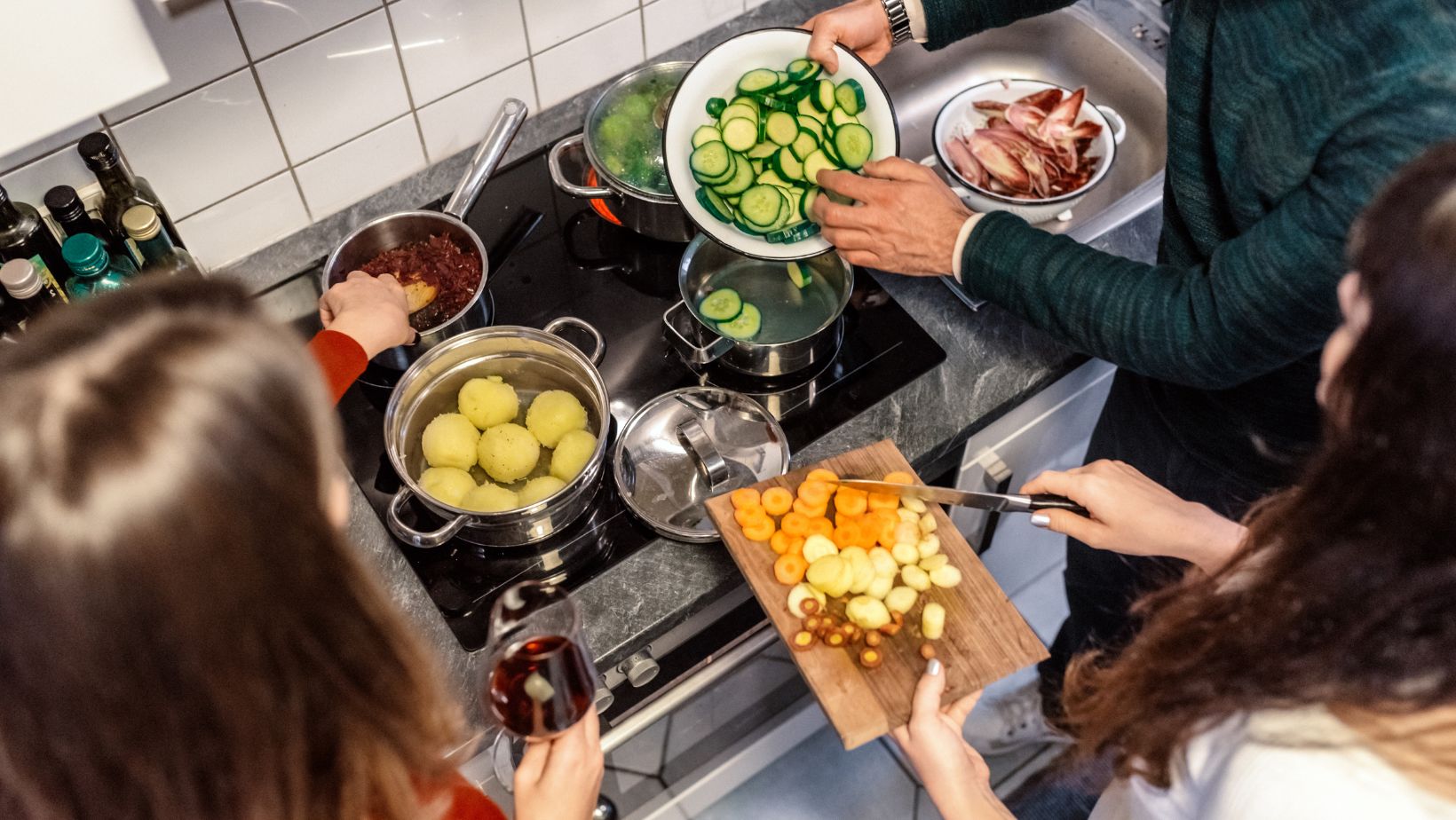Are you looking for new and healthier recipes to make at home? Cooking nutritious meals can be as easy—and sometimes even quicker—as cooking unhealthy dishes. With health experts focusing more on nutrition, the need for creative cooks or baking specialists who help their families maintain healthy eating habits is stronger than ever.
As a result, home chefs of all levels need to learn about nutritious combinations and how different ingredients interact. To help make this process easier, we have gathered our best tips for using nutritional values to create delicious yet healthy dishes in your kitchen.
Identify Your Goals
If you’re a home cook looking to make more nutritious meals, one of the most important steps you can take is to identify your goals. Are you looking to lose weight, improve your energy levels, or simply feel better about the food you put in your body? Once you have a clear idea of what you want to achieve, you can start making smart choices about your diet.
For example, if weight loss is your goal, you may want to incorporate more protein and fiber into your meals while limiting your intake of processed foods and added sugars. Whatever your goals may be, taking the time to identify them is a crucial first step on your journey towards a healthier, more nutritious diet. You can indulge in delicious treats with gluten-free cookie delivery without compromising your dietary goals.
Shop Smart
Once you’ve identified your goals, it’s time to head to the grocery store. When shopping, read labels carefully and pay attention to nutritional information. Look for products high in nutrients such as vitamins and minerals while also low in unhealthy fats, added sugars, and sodium. Fresh fruits and vegetables are always a great option, but frozen fruits and vegetables can also be convenient and nutritious.

Also, feel free to try out new ingredients you may have yet to use. Experimenting with different grains, proteins, and spices can add variety to your meals while providing essential nutrients. Consider buying whole wheat pasta instead of white pasta or trying out quinoa instead of rice to boost protein and fiber.
Get Creative
One of the best things about cooking at home is the ability to get creative with your dishes. Feel free to experiment with different flavor combinations and cooking techniques. For example, try roasting vegetables instead of boiling them or marinating lean proteins before grilling them for extra flavor. Using herbs and spices instead of salt can add depth and complexity to your dishes without excess sodium.
Additionally, consider incorporating more plant-based meals into your diet. Plant-based diets have been linked to numerous health benefits and can be just as delicious and satisfying as meat-based meals. Plenty of recipes online use nutrient-rich ingredients like beans, lentils, and tofu instead of meat.
Measure Ingredients Precisely
When cooking for your health, measuring ingredients precisely is essential. It helps you keep track of portion sizes and ensures you get the right balance of nutrients in each meal. Invest in a good set of measuring cups and spoons, and use a food scale if necessary. You may be surprised at how much you learn about proper portion sizes and the nutritional value of different foods by simply taking the time to measure them out accurately.
Remember that healthy cooking doesn’t have to be bland and tasteless. Experiment with different herbs, spices, and seasonings to add flavor without relying on unhealthy ingredients like excess salt or sugar.

With some creativity and effort, you can make nutritious meals that are delicious and satisfying for the whole family.
Experiment With Different Cooking Methods
One of the keys to making healthy and delicious meals is experimenting with different cooking methods. While frying may be quick and easy, it often adds unnecessary fat and calories to dishes. Instead, try grilling, roasting, steaming, or sautéing your ingredients to bring out their natural flavors without adding excess unhealthy elements.
For example, grilling lean chicken breast instead of frying it can reduce the amount of unhealthy fats in your meal. Steaming vegetables preserve their nutrients and natural flavors without adding any extra calories. And sautéing with a small amount of heart-healthy olive oil is a great way to add flavor and texture to your dishes without overwhelming them with grease or butter.
Incorporate Healthy Snacks
Snacking can be a challenge when trying to maintain a healthy diet. However, incorporating nutritious snacks into your day is crucial for avoiding hunger and unhealthy cravings. Instead of reaching for chips or candy, try snacking on nuts, fresh fruit, or hummus with veggies. These options provide essential nutrients while also being satisfying and delicious.
Additionally, consider making homemade snacks and treats to avoid the added sugars and unhealthy ingredients in many store-bought options. With some planning and preparation, you can have healthier alternatives to your favorite snacks at home.
Practice Preparing Meals Ahead of Time
One of the most common excuses for not cooking healthy meals at home is lack of time. To combat this, try preparing some meals ahead of time. It could mean prepping ingredients for a dish that can quickly be cooked when you’re short on time, making more significant portions, and freezing individual servings for future meals. Having healthier options ready-made can help you stay on track with your goals and avoid turning to fast food or unhealthy snacks when you’re pressed for time.














